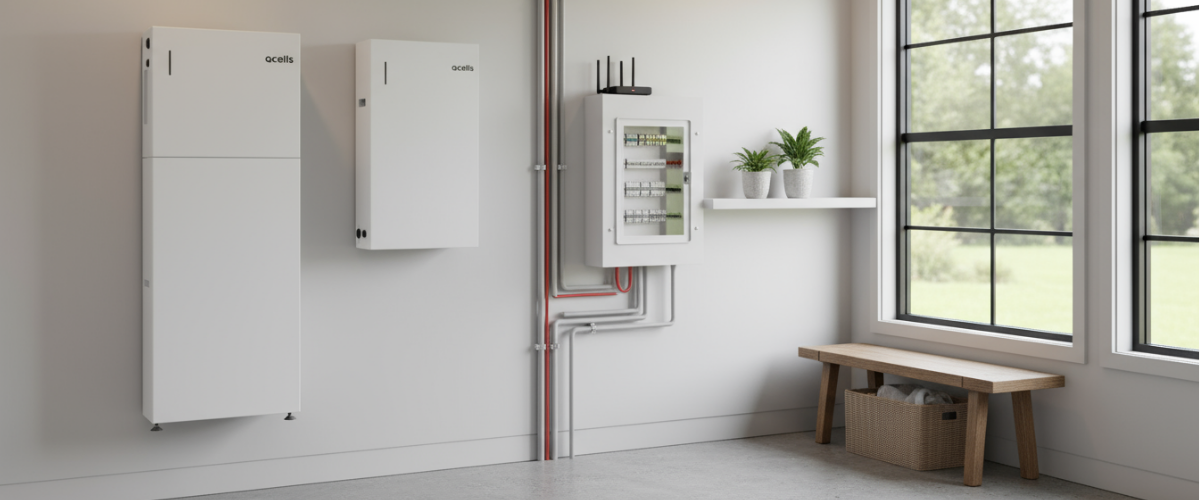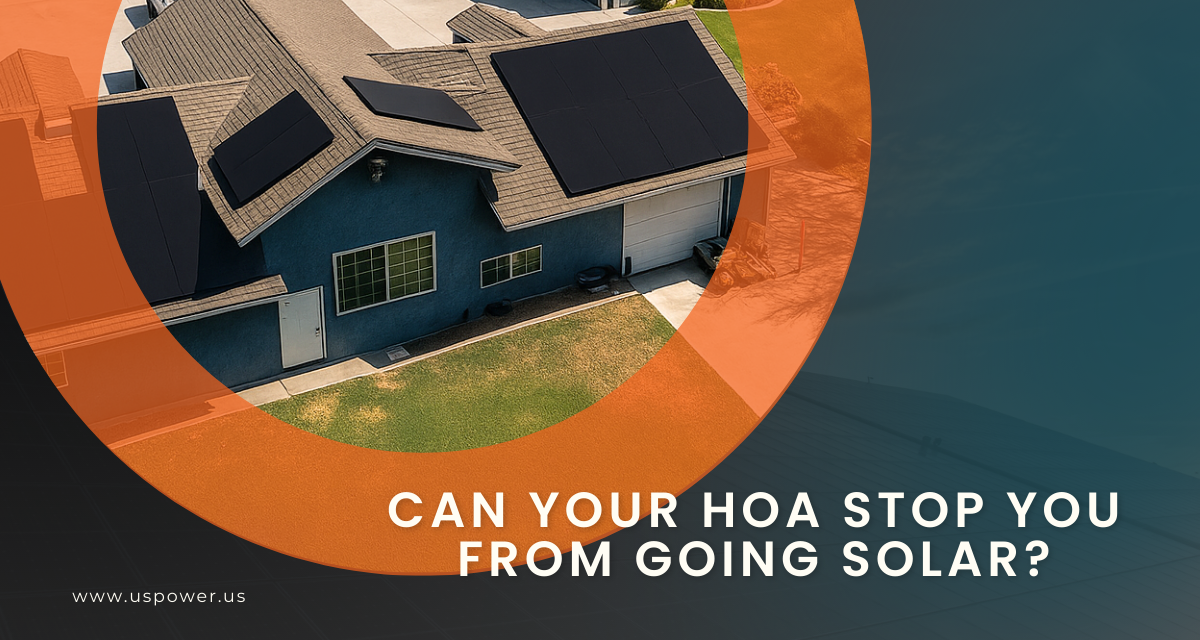Is Battery Storage Still Worth It Today?

Solar and Roofing Advisor
Explore rebates, fire-safe placement rules, and real returns of home battery storage in California. Get expert insights from US Power’s 2025 solar guide.

For homeowners across Southern California, the idea of installing a home battery might seem like something you only do after solar panels—or something that’s now too late to matter. But in 2025, the reality is very different. Whether you already have rooftop solar or not, there are compelling reasons why integrating a battery-storage system is worth serious consideration.
At US Power, we bring exclusive access to factory-direct-priced, American-made panels through our partnership with QCells — and we’re seeing many homeowners now pairing them with high-quality battery systems to optimize savings, resilience, and long-term value.
If you’ve been wondering whether a battery is worth it for your home, this guide breaks down why now is as good a time as ever, what it means both with and without solar, and how Southern California homeowners can decide if battery storage is a smart investment.
Why Home Battery Storage Matters in 2025
1. Rising grid electricity costs + changing solar compensation
Electricity rates in California have been among the highest in the nation — and they continue to rise. For homeowners who rely solely on grid power, that means escalating monthly bills. Meanwhile, solar compensation has shifted. Under the new NEM 3.0 rules, excess solar exported to the grid earns much lower credits (~$0.04–$0.05 per kWh) compared to the ~$0.30+ per kWh you pay to buy it back.
This gap makes self-consumption of your solar output far more valuable — and that’s exactly what a battery helps you do.
2. Incentives and rebate programs favor storage
California’s Self-Generation Incentive Program (SGIP) continues to offer strong rebates for homeowners installing energy-storage systems — sometimes even battery-only systems.
For example:
- Homeowners in qualifying low-income or disadvantaged areas may receive $850–$1,000 per kWh of battery capacity.
- Pairing solar + storage often unlocks higher incentive tiers.
For Southern California homeowners, this means the upfront cost of a quality battery system can be significantly reduced — and the payback period improved.
3. Backup power & resilience
Beyond economics, battery storage delivers peace of mind. With wildfire-related Public Safety Power Shutoffs (PSPS) and grid outages becoming more common, a home battery can keep essential loads — like lighting, refrigeration, Wi-Fi, and medical devices — running seamlessly when the grid goes down.
4. Solar-plus-storage is the new normal
Because of the change in export compensation and rising rates, installing solar panels without a battery isn’t as optimal as it once was. A storage system shifts your home from “generate by day and buy by night” to “store by day and use by night,” unlocking next-level savings and independence.
Battery Storage Without Solar — Yes, It Can Still Make Sense
Many homeowners assume that “if I don’t have solar, a battery is pointless.” That’s no longer true.
A battery-only system can still:
- Charge during off-peak hours when grid rates are lower and discharge during expensive peak times.
- Provide emergency backup power during outages.
- Prepare your home for a future solar installation — making you “storage-ready.”
It’s especially worthwhile if you face high evening rates, rely on critical power loads, or qualify for a rebate program that brings your upfront cost down.
Battery Storage With Solar — The Best Scenario for SoCal Homes
If you already have solar panels or plan to install them soon, pairing them with a battery maximizes savings and energy control.
Key benefits:
- Use more of your own solar energy instead of exporting at low NEM 3.0 rates.
- Avoid peak-hour grid rates by discharging your stored power when utility prices spike.
- Increase independence and reduce reliance on the grid.
- Enhance resilience during outages and future-proof your home.
With Southern California’s abundant sunshine, the combination of QCells’ high-efficiency panels and smart storage provides superior ROI — often achieving payback within 10–12 years or less.
What Homeowners Should Consider Before Installing Battery Storage
System size & power needs
Your battery system should match your household’s energy use, backup needs, and solar generation. Oversizing raises costs unnecessarily, while undersizing may limit your savings potential.
Inverter and charge-discharge rates
Ensure your inverter and battery can handle your home’s load spikes (HVAC, EV chargers, etc.) for optimal performance.
Time-of-use rate planning
If your utility uses TOU pricing, your battery’s scheduling and automation will determine how much you actually save.
Compliance With California Building Code Safety Requirements
When installing a home battery system, safety and code compliance are crucial — not just for inspections but for long-term protection.
Under California Building Code (CBC) Section 322.4.3.1 – Distance From Storage to Exposures, outdoor storage of lithium-ion or lithium-metal batteries (including those under weather protection per Section 414.6.1) must meet one of the following safety clearances:
- 20 feet minimum from any building, lot line, street, alley, public way, or means of egress; or
- 3 feet minimum where separated by a 2-hour fire-resistance-rated wall without openings or penetrations, extending at least 5 feet above and to the sides of the battery area; or
- 3 feet minimum when batteries are housed in approved prefabricated portable structures with a full 2-hour fire-resistance-rated enclosure.
These spacing and barrier rules ensure proper fire protection and are required by local building departments during permitting.
Additional California regulations may also apply, including:
- CBC Chapter 4, Section 414 – Hazardous Materials Storage (for weather-protected ESS).
- California Fire Code (CFC 2022) Chapter 12 – Energy Storage Systems: covers ventilation, fire access, and emergency labeling.
- National Electrical Code (NEC Article 706) and NFPA 855, which outline wiring, grounding, and disconnect requirements.
At US Power, every installation is engineered to comply with state and local building codes. Our licensed electricians ensure that battery placement, ventilation, and fire-rating standards meet or exceed CBC and CFC requirements — helping you pass inspection and keep your home protected.
Why Compliance Matters
- Ensures safety and insurability for your property.
- Prevents costly rework or permitting delays.
- Guarantees system longevity and warranty protection.
- Protects your family and neighbours in the event of a fire or grid failure.
Disclaimer: Always consult your local Authority Having Jurisdiction (AHJ) and a licensed installer for specific placement and permitting requirements before installing any battery energy-storage system.
Backup vs. self-consumption goals
Design your system around your main objective — backup power or cost savings. Your battery size, control software, and inverter choice will differ based on that priority.
Installation space & permitting
Battery systems require dedicated, ventilated space and city-approved electrical permits. Proper planning avoids delays and ensures long-term safety.
Installer expertise
Choose a licensed installer experienced with both solar and storage integrations. US Power’s technicians are certified for QCells, Tesla Powerwall, Enphase, and other leading battery brands.
Why Homeowners Should Act in 2025
- Incentives may decrease as SGIP and federal funds are used up.
- Electricity costs continue to rise, eroding future ROI.
- NEM 3.0 export credits are at all-time lows — making self-storage more valuable.
- Backup reliability is essential as PSPS events become more frequent.
- US Power’s factory-direct QCells pricing gives you premium performance at an unmatched value.
Why Choose US Power for Solar + Storage Installation
- Exclusive QCells partnership — American-made panels at factory-direct pricing.
- Local expertise — we know Southern California’s utilities, codes, and permitting processes.
- End-to-end service — from design to inspection, we handle it all.
- Code-compliant designs that meet CBC, CFC, and NEC standards.
- Transparent ROI modelling and clear payback timelines.
Take the First Step Today
Don’t wait for your next high utility bill or outage. Right now, Southern California homeowners can:
- Leverage SGIP + federal tax credits
- Lock in lower electricity rates before future hikes
- Access high-efficiency solar + storage solutions at local pricing
- Gain energy independence and peace of mind
In 2025, home battery storage isn’t just a luxury—it’s a smart, safety-compliant investment for California homeowners. With evolving utility rates, stronger code enforcement, and generous incentives, the case for solar + storage has never been clearer.
Schedule an appointment with US Power. Our experts will analyze your energy use, rate plan, and site layout to determine whether battery storage — with or without solar — makes sense for you.
US Power ensures every installation meets California’s strictest standards while delivering long-term energy savings and reliability.
Related Articles
Our Related Blogs
Find the right solar system size for your California home to save energy efficiently.
Find key tips for choosing the right solar company in Los Angeles, California.
Understand HOA rules and your rights when planning to install solar in California.
Our Solar and Roof Brand Partners








We empower communities and businesses to harness clean, renewable solar energy solutions that drive sustainable growth.
Ready to Own Your Power? Call us today!
818-650-8010
Copyright © 2025 US Power - Axia by QCells. All Rights Reserved.
Privacy is important to us, so you have the option of disabling certain types of storage that may not be necessary for the basic functioning of the website. Blocking categories may impact your experience on the website.
Essential
These items are required to enable basic website functionality.
Personalization
These items allow the website to remember choices you make (such as your user name, language, or the region you are in) and provide enhanced, more personal features.
Marketing
These items are used to deliver advertising that is more relevant to you and your interests.
Analytics
These items help the website operator understand how its website performs, how visitors interact with the site, and whether there may be technical issues.
We and our third-party partners use cookies and other technologies to enhance and track your experience on this site, conduct analytics, and personalize marketing to you. By using the site, you agree to our use of these technologies, including recording and monitoring your interactions with the site.
Get an instant solar estimate using satellite!









